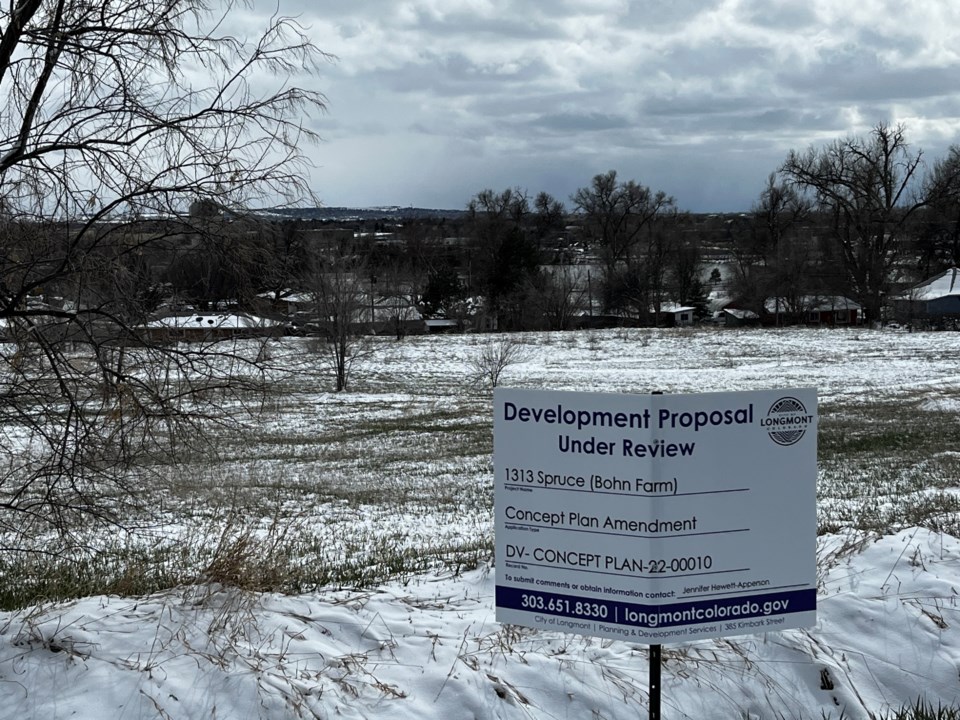The Longmont Leader accepts contributions, photos, letters to the editor, or LTEs, and op-eds for publication from community members, business leaders and public officials on local topics. Publication will be at the discretion of the editor and published opinions do not represent the views of the Longmont Leader or its staff. To submit a contribution, email [email protected].
Developers are attempting to take advantage of R-MN zoning for in-fill developments in ways never intended nor defined in the City’s Municipal Code.
So, what is the actual purpose and intent of a zoning district classified as “Residential - Mixed Neighborhood” or R-MN? The City’s Municipal Code answers this question in two key passages. The first reads as follows:
"This district is intended to be conveniently located near collector and arterial streets, and in close proximity to activity centers and other public amenities and/or complementary uses and activities such as schools, parks, open space, and public transit.”
Let’s put this purpose and intention to the test as it relates to the current proposal to build 70 townhomes in the Bohn Farm Neighborhood. First, Longmont Municipal Code states that R-MN developments should be located conveniently near collector and arterial streets. The fact is that there are no collector or arterial streets in the Bohn Farm Neighborhood near the proposed development. All surrounding streets are designated as local with an average width of 30’ or less; whereas Longmont Public Improvement Design Standards specify a width of 34’. Additional traffic and on-street parking generated by the development on narrow local streets is one of the primary concerns of neighboring residents. It’s interesting to note that those concerns appear addressed in the code, but it remains to be seen if the City will follow its own guidelines in this case.
Second, it states that R-MN should be in close proximity to activity centers and public amenities. Bohn Farm is a residential neighborhood; there are no activity centers or public amenities nearby. In fact, the nearest public transit stop is at 3rd & Main, over 3/4 of a mile from the proposed Bohn Farm development. For comparison, consider the approved townhome development near Hobby Lobby; also R-MN. Prospective residents will be able to walk to the farmers market, restaurants, supermarkets and access public transit at the coming transit hub to be located just across Nelson from the development. Is that not a text book example of the intent of R-MN designation?
Longmont Municipal Code also states that R-MN should accommodate “a variety of housing types, including detached and smaller scale attached dwellings.” The proposed Bohn Farm development currently shows only one housing type: uniform townhomes located within 12 three-story rectangular blocks that are approximately 35’ tall and 130’ in length with six units in each building. How can this possibly be considered a varied housing type, much less “smaller scale attached dwellings”?
City Code 15.01.030, Section 4, offers further clarification: “The regulations of this development code are intended to provide and maintain livable centers, corridors, and neighborhoods by:
a. Conserving and stabilizing property values through appropriate land uses;
b. Improving the aesthetics and design of all primary entrance corridors (gateways) to the city;
c. Conserving and enhancing the character of the city's older, established residential neighborhoods; and
d. Encouraging innovative and quality residential development.”
The current proposal for Bohn Farm, if left unchanged, fails to meet any of the above criteria that are expressly stated in Longmont’s Municipal Code. One could argue that increased traffic, on-street parking and irrevocable change to the historic character of the Bohn Farm Neighborhood could lead to decliningproperty values. The current proposal for (12) barracks-style buildings does not appear innovative; while the previously approved Bohn Farm Co-Housing Community was indeed an “innovative and quality residential development” with a variety of homes, a community center and a two-acre CSA garden. No surprise that a majority of the Bohn Farm Community supported the original concept plan for a co-housing development.
Bohn Farm neighbors do live in a quality neighborhood, and believe that any future development be of that same high quality. What we do not support is a development where success is only defined by the maximum height and density allowed in order to maximize developer profit. The City’s zoning designation of R-MN appears to leave plenty of opportunity for both the City and developer to join us to ensure that any new development at 1313 Spruce Avenue be something for which we can all be proud.



